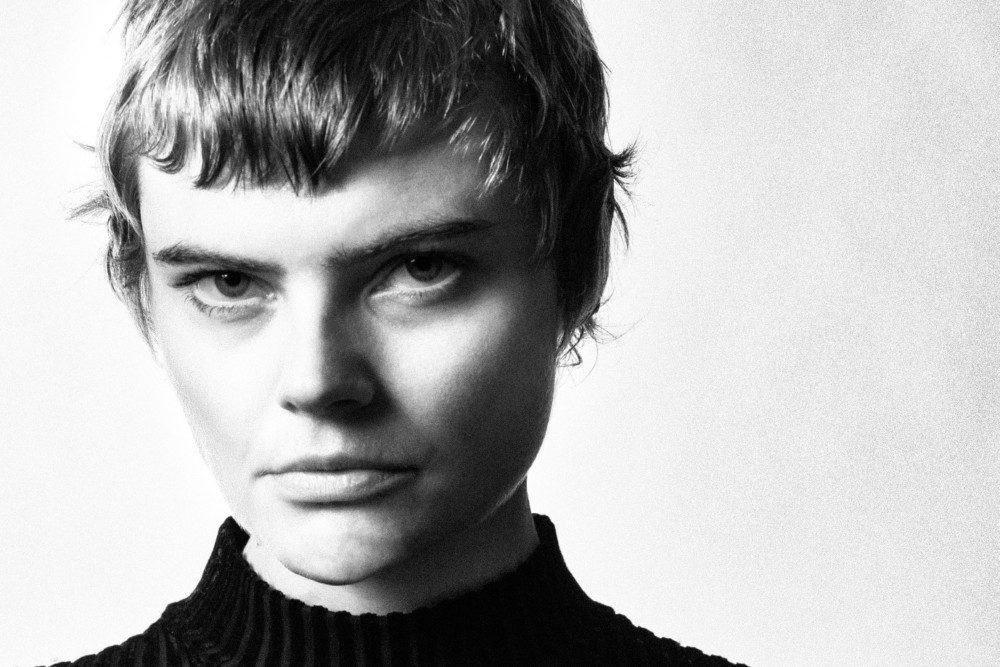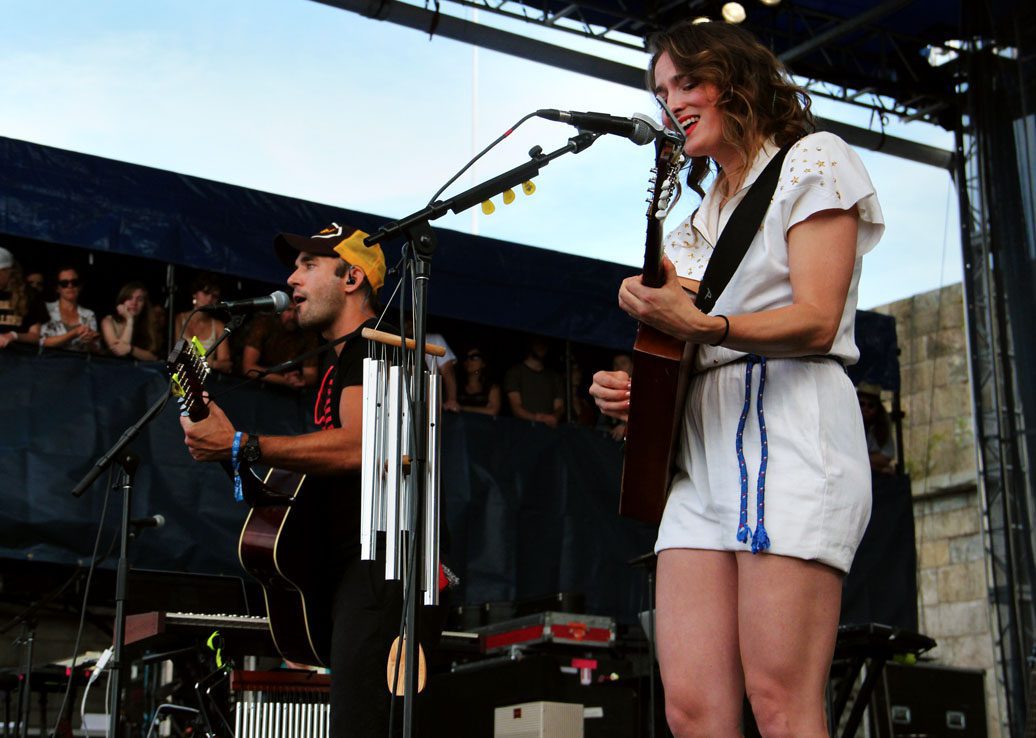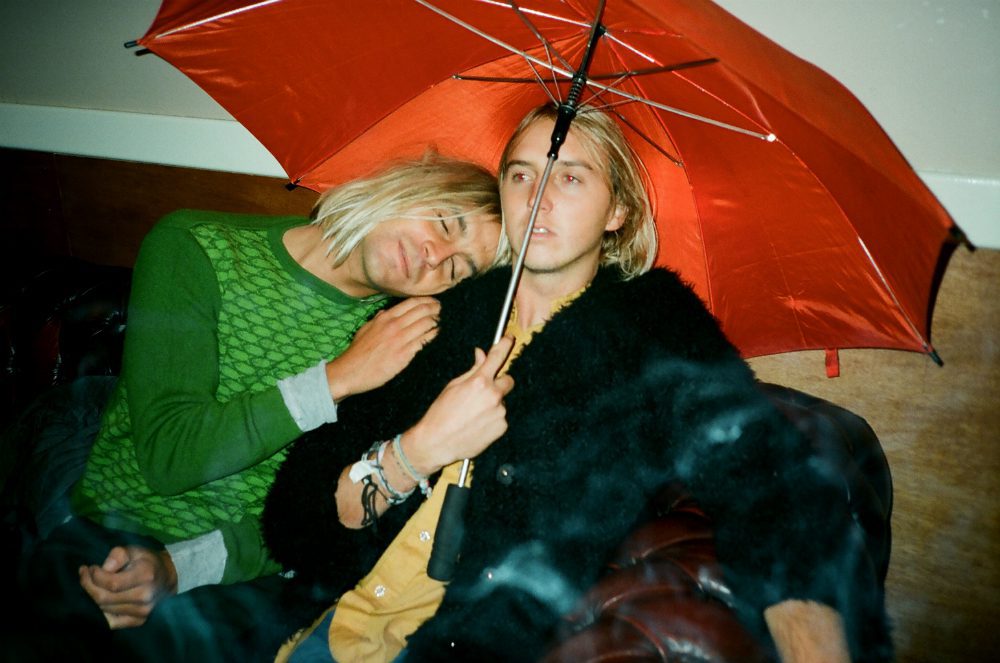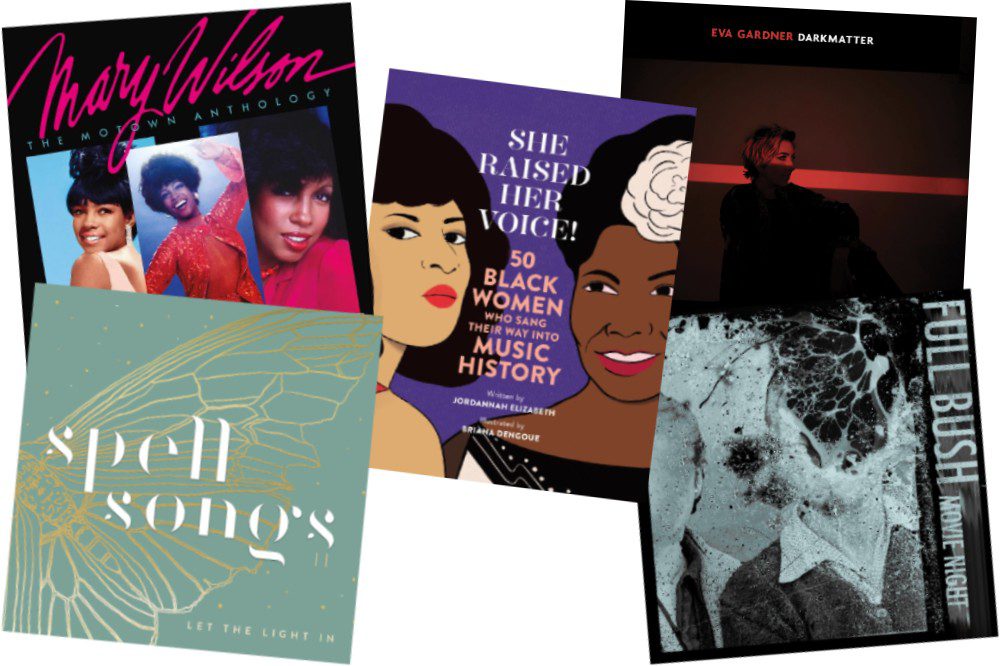

Isabella Steinsdotter, known simply as Steinsdotter professionally, is best known as a visual artist. However, she recently debuted her first single, “Hidden Child,” a song about reclaiming your body in the aftermath of a sexual assault. The music and its accompanying video (directed by Fayann Smith) are equal parts gorgeous and haunting, featuring Steinsdotter singing eerie lyrics like “seduction lies in cold disguise” in a soprano voice as she walks down the street in a lacy white dress and then shaves off all her hair on a beach. Hailing from Norway and currently living in London, Steinsdotter is a descendent of a viking witch warrior whose jewelry resides in the British Museum, and this ancestry influences much of her work. We talked to Steinsdotter about her music and artwork, its incorporation of witchcraft, and her efforts to empower sexual assault survivors.
AF: What was the thought process behind your debut single “Hidden Child”?
IS: “Hidden Child” is to me a song about the loss of innocence. You’re in a dark place and you see nothing, and you try to create that hope for yourself. It’s a song about creating hope where there is no hope. There’s a certain darkness to it because it’s very real, so it’s not just the nice things you want to remember but the real things.
AF: What made you want to write about this topic?
IS: It’s a very personal song because it’s a song about surviving sexual assault at the end of the day. It wasn’t like I planned that would be the first song I released, but at the same time, when it was finished, it seemed like a very natural way for me to be introduced to music because it says a lot about who I am. I guess I wanted to release something that was real, and I feel like it is very real. I’ve had a lot of people reach out to me who have been in similar situations who have also had sexual assault, and it’s been very empowering to have all those people share their stories and be empowered by it.
AF: What message would you like to send to sexual assault survivors with the song?
IS: Basically that you’re not alone; that regardless of how overwhelming and challenging it is, if you are in that situation, there are ways that you can take back your own power. You don’t have to stay in that state of being. It’s very overwhelming when it happens, and I think the good thing about it is, the awareness about it is becoming greater. We talk a lot about it nowadays. It’s not so easy to get away with, and I feel like it’s a time for people to come together and tell the truth about it. I’ve seen even men who have done bad things to women are almost brave enough to say it out loud now because it’s so obvious that it’s wrong. It’s not really a simple message, it’s not one thing, but it’s openness and awareness – basically, showing that it needs to change and that we need to change consciousness around it more. I just don’t want women to have to feel unsafe because that is the worst feeling, and it’s nice to find something powerful in it somehow that you can take for yourself. That’s kind of what I was trying to do for myself by writing it, finding something powerful, not just something broken.
AF: What is the significance of you shaving your head in the video?
IS: It was so powerful for me personally. It was very tense because when we filmed the video, everything happened in real time. Nothing was staged. It was all about letting go of the projections that people put onto me — not just me, but as a woman, you constantly have to battle all these projections people put onto you, and you’re an object of many things, and it’s not necessarily like you want to be that. So, for me, it was about stripping everything back, getting it all off me, then starting fresh with just me. The symbolism was to get rid of all the extra things, back to the organic self.
AF: I read that you’re a descendent of a viking witch. Do you identify as a witch?
IS: Yeah, I definitely identify as a witch, and ever since I found out, it’s been extremely empowering for me personally. I know a lot of really amazing witches. It seems like it’s one of those things that is also becoming okay — it’s not something that you necessarily cannot talk about, and I just see that everything’s changing into a more open discussion, and I really like that.
AF: What does being a witch mean to you?
IS: To me, it just means being organic and in touch with our own emotions and nature in a way that is nurturing for you and people around you. It doesn’t necessarily have to be more complicated than that. I feel really humble to nature, and in some ways, that is the most important relationship to worship as a witch because nature can lead me to where I should be.
AF: How does witchcraft affect your work?
IS: In my process of writing or even singing or rehearsing, I will go outside, walk around barefoot, or sing in the woods to get centered when I’m really nervous, because I get really nervous if I have a show or something. I have to work really hard to stay grounded.
AF: I was reading about your photography, video, and performance project Seiðr, which is described as a “ritual inspired by the female vikings.” How does that incorporate your witch ancestry?
IS: Seiðr is a name for spirituality that the vikings would use. We went to Norway, and we were out in minus 12 to 18 degrees, and we found this presence where we just lit a fire and wanted to humbly give our thanks to our ancestors and to nature. Because we were hunting for the northern lights, we were dancing around the fire, and everything is intensely about visualization rather than straightforward words. Let’s say, for example, for me, a ritual can be singing and the energy you’re putting into that song. Seiðr is about working with the organic ways of nature, but being very present in that place and following your intuitive mind rather than your rational mind. That’s the state of mind you want to be in so you can communicate with something greater than a singular person. It was very refreshing. Have you ever been in minus 18 degrees? Your brain just kind of freezes, and you can’t feel that you’re cold because you can’t feel that you’re there anyway, and your phone dies quickly because it’s so cold — it just sucks the battery out of it. It’s really strange.
AF: Are you working on any new music?
IS: I am. I’m basically working to release my next song, which will be released in early November, so that’s what I’m doing at the moment. I’m also working on finishing the music for the video for Seiðr, which is going to be in a museum in Rome for a month. I have the music. I’m making music for it, so that’s very exciting.
AF: What kind of music?
IS: This one is a little different from the way I normally do it because I’ve been walking around collecting sounds in nature and stuff. I love atmospheric music in general and kind of classical, but it will be not a straightforward singy-song but more atmospheric. I’ve been very influenced by Seiðr itself and the viking-sounding music. I really like what’s coming out of Scandinavia.
AF: That’s so cool. Is there anything else you wanted to mention?
IS: It is quite funny that in the “Hidden Child” music video, the dress I’m wearing is also actually made out of the curtains that came from Buckingham Palace, so basically, they’re the queen’s curtains on the dress. So it’s even more symbolic, ripping it open. The symbolism of ripping that dress is even stronger because of where it came from.
AF: What does that represent to you?
IS: An old world that is not very functional anymore, because I don’t believe that anyone should be born with the right to be better than anyone else. It makes no sense in this society anymore.
Follow Steinsdotter on Instagram for ongoing updates.




